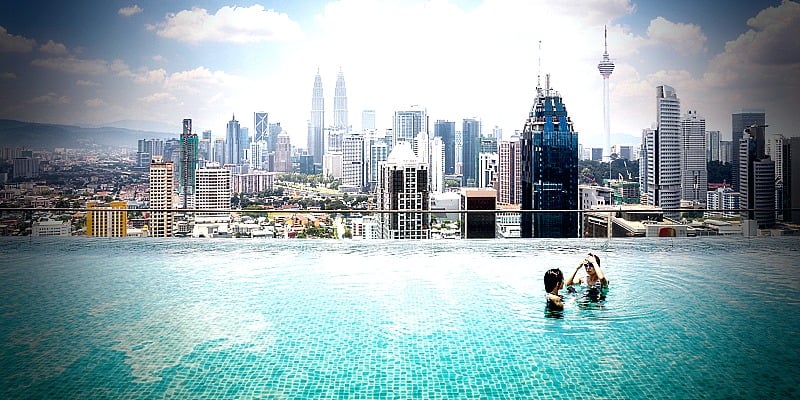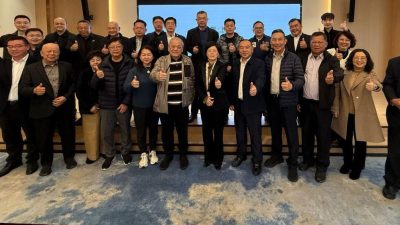The coronavirus pandemic which has lasted a full three years has almost decimated the global tourism industry.
As such, when China announced earlier this year to reopen the country’s borders, with the number of outbound Chinese travelers and potential emigrants anticipated to rise, Southeast Asian states began to vie for a slice of the pie, including our country Malaysia.
As a result, the unity government has announced to review the existing requirements for the MM2H program, to make the application procedures easier and more versatile.
The announcement couldn’t have come at a more opportune time in our quest to woo more foreign experts and funds.
According to a statement, the tourism, arts and culture ministry and the home affairs ministry have agreed to let agencies under the tourism ministry assist MM2H applicants in compiling their documents for submission to the home ministry or the immigration department. It is believed that such an arrangement will help cut unnecessary red tape.
It has been reported earlier that the number of MM2H applicants plunged by a whopping 90% in 2021 due to the excessively stringent requirements.
Currently applicants are required to have permanent savings of at least RM1 million and liquid assets of at least RM1.5 million. Previously they were only required to have RM300,000 and RM500,000 respectively.
It is hoped that with the relaxation of requirements, we will be able to compete with other regional countries in wooing these high net worth individuals and their families to settle down in Malaysia.
MM2H was first introduced in 2002, and up till 2019 had attracted more than 57,500 foreign applicants, including those from China, Japan, the UK, Bangladesh, South Korea, Singapore, USA, Australia, Taiwan and Indonesia.
Unfortunately, the home ministry unexpectedly terminated the MM2H program during the pandemic without giving any explanation. The program was later reinstated in October 2021.

However, the reinstated MM2H program has included ten additional conditions with substantially higher thresholds.
Then home minister Hamzah Zainudin said the purpose of more demanding requirements was to ensure that only those who were really serious about settling in Malaysia and would contribute positively towards the country’s economic recovery, would be approved.
Sounds reasonable, but bear in mind that well qualified and high net worth individuals have many other places to choose from, not just Malaysia!
Last September, Hamzah also revealed that the cabinet had agreed to launch the Malaysian Premium Visa Program (PVIP) offering well-to-do foreigners up to 20 years of residential visas to help stimulate the national economy, lure investment and create new job opportunities for Malaysians.
Back then Hamzah said some 20,000 applications had been received a day after PVIP was announced on September 1. Unbelievable, but what after that?
If PVIP could become a reality, then the 20,000 successful PVIP applicants should bring RM4 billion of revenue to the national coffers, along with RM20 billion in fixed deposits in Malaysian banks. Of course, this didn’t happen eventually!
Be it PVIP or the revised MM2H, their requirements were all about money. Sure enough this shouldn’t be much of a problem, but other than money, we also need talent — people with high qualifications, rich working experiences, as well as technical experts and professionals who will help boost the country’s economic development.
Anyone keen to migrate to Singapore, USA, Canada, Australia, UK or any EU country will need more than just cash to relocate to these countries.
Singapore, for instance, owes much of its prosperity to the million-strong Malaysians who have made the tiny city-state their new home, although not all of them are multi-millionaires!
Hopefully the Malaysian government will take cue from Singapore’s experience.
Before the pandemic in 2019, Malaysia recorded 26.1 million tourist arrivals with over RM86 billion in direct tourism receipts, the bulk of which from Chinese tourists.
With the pandemic now largely behind us, we nevertheless are not so optimistic that domestic as well as global tourism will rebound within a short period of time.
Tourism Malaysia estimated earlier this year that more than five million Chinese tourists would visit the country in 2023. However, this number was subsequently revised downward to 3.5 million in April.
Not only Malaysia, Thailand, the most favorite destination among Chinese travelers, has also missed its target for Chinese tourists. The Phuket News reported that only 695,000 Chinese tourists visited Thailand as of April 18 this year, or merely 14% of Tourism Authority of Thailand’s full-year target.
We believe Thailand will review its strategy in order to lure more tourists to the country. As for us, we will need to do something and not to be left behind.
Malaysian Inbound Tourism Association (MITA) has urged the government to relax its visa-on-arrival policy. Currently visitors from China and India will have to go through a third country (such as Singapore, Indonesia, Thailand or Brunei) before entering Malaysia to be eligible for a 15-day visa-on-arrival. Such a ridiculous mechanism must be revised as soon as possible, or better still abolished.
As a matter of fact, the experience in Thailand shows that their visa-on-arrival scheme (without the need to first go through a third nation) has prompted some Chinese to look elsewhere.
As such, what we need to do now is not just to relax the visa-on-arrival policy, but offer visa exemption facility to get the Chinese to come here!
ADVERTISEMENT
ADVERTISEMENT








































